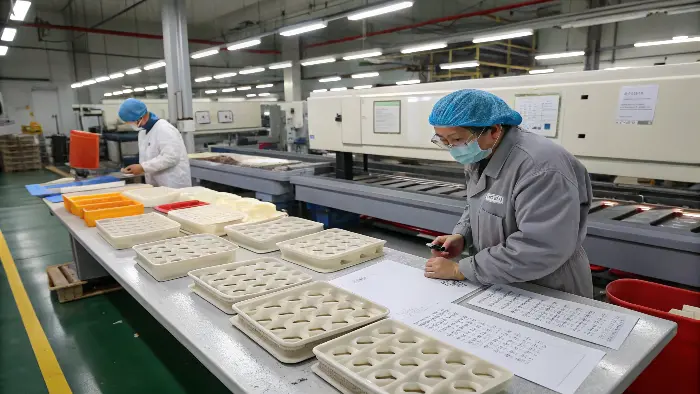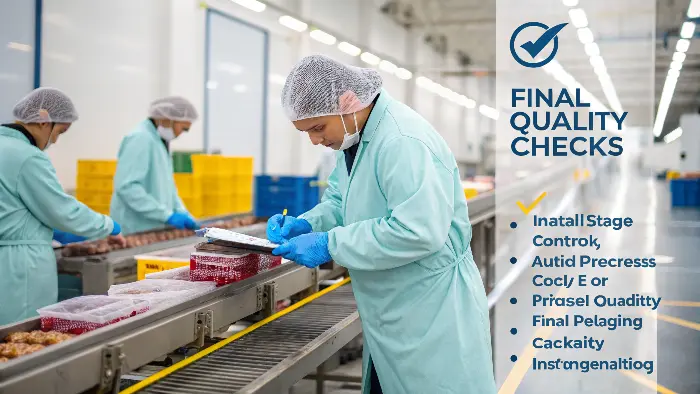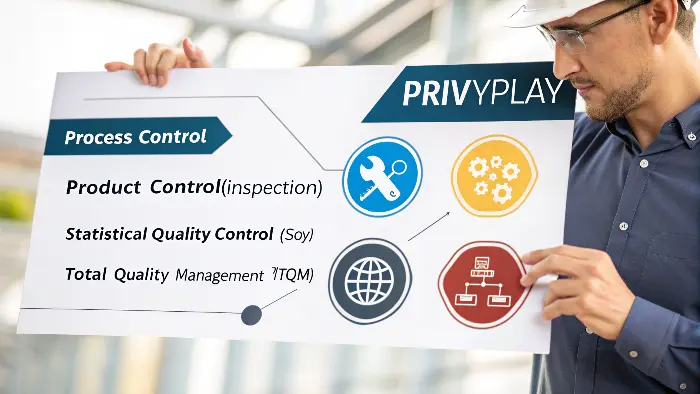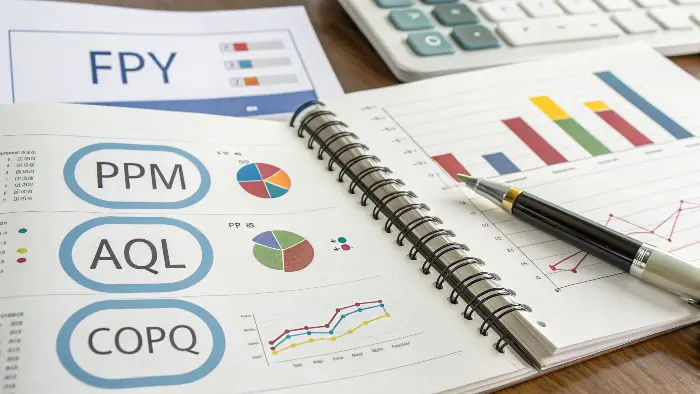Are you tired of receiving shipments of adult toys only to find inconsistencies and defects that tarnish your brand’s reputation? It’s a frustrating experience that wastes time, money, and erodes customer trust. The solution lies in a robust, well-implemented quality control (QC) system that catches issues before they ever reach your warehouse.
To implement a quality control system for TPE adult products, you must first define clear quality standards and specifications for materials, dimensions, and performance. Then, establish inspection points throughout the manufacturing process: pre-production for raw materials, in-process during molding and assembly, and a final, comprehensive check of the finished goods. This systematic approach, combined with strong supplier communication, ensures consistency and minimizes defects from start to finish.

When I first started in this industry, I thought a "golden sample" was enough. I’d approve a perfect prototype and assume the bulk order would match. I learned the hard way that without a system to enforce that standard, production quality can drift significantly. A structured QC process isn’t just about catching mistakes; it’s about building quality into every step. It turns hope into a reliable, repeatable outcome. For brand owners like you, understanding this system is the key to scaling your business without sacrificing the quality your customers expect. Let’s break down how you can ensure that happens.
How do you ensure quality control in a manufacturing process?
You’ve finally approved the perfect sample, the color is just right, the texture is amazing, and it feels like a winner. Then, the first mass production shipment arrives, and it’s a disaster. Sound familiar? This gap between the sample and the final product can crush a product launch and leave you feeling helpless. But you can take control by embedding quality checks throughout the entire manufacturing journey.
To ensure quality control, you must move beyond just a final inspection. It involves a multi-stage approach: rigorously inspecting incoming raw materials, conducting in-process checks during manufacturing, and performing a thorough final quality audit before shipment. This creates multiple layers of protection, ensuring standards are met from the raw TPE pellets to the final packaged product. It’s about being proactive, not reactive, in the pursuit of perfection.

Dive Deeper
Ensuring consistent quality is a promise you make to your customers, and it’s a promise we, as your manufacturing partner, help you keep. A truly effective QC process is integrated into the production line, not bolted on at the end. Here at PrivyPlay, we think of it in three distinct phases.
1. Pre-Production Control (Incoming Quality Control – IQC)
This is the foundation. Before a single toy is molded, we rigorously inspect all incoming raw materials. Garbage in, garbage out, as they say. For TPE products, this is critical. We verify:
- TPE Grade and Hardness: Does the material match the specified shore hardness for the desired feel? Is it medical-grade and body-safe? We demand certificates of conformity from our suppliers.
- Color Masterbatch: We check the color concentrate against the approved Pantone standard under controlled lighting to ensure color consistency from batch to batch.
- Component Checks: For toys with electronic parts, we test motors, batteries, and charging ports before they are even sent to the assembly line.
2. In-Process Quality Control (IPQC)
This is where we monitor the manufacturing process in real-time. Our line supervisors and QC staff constantly patrol the production floor. Their goal is to catch and correct deviations as they happen. This includes:
- Molding Checks: Regularly pulling newly molded parts to check for defects like flashing (excess material on the seam), sink marks, or air bubbles. Machine parameters like temperature and pressure are monitored constantly.
- Assembly Checks: Ensuring all components are assembled correctly. Are buttons responsive? Are charging ports sealed properly for waterproofing?
- First Article Inspection (FAI): The very first products off the line in a new run are intensely scrutinized against the golden sample and technical drawings to ensure the setup is perfect before mass production continues.
3. Final Quality Control (FQC)
This is the final gatekeeper. Before any products are packaged, a random sample from the batch undergoes a comprehensive final inspection based on an established Acceptance Quality Limit (AQL) standard. This tells us the maximum number of defective units acceptable in a batch.
| FQC Checkpoint | Description | Common Defects to Look For |
|---|---|---|
| Visual Inspection | Checking the overall look and feel of the product. | Scratches, dirt, discoloration, poor molding seams. |
| Functional Test | Operating the toy through all its functions. | Weak vibration, non-working modes, charging issues. |
| Dimension Check | Measuring the product with calipers to ensure it matches the technical specifications. | Incorrect length, diameter, or component fit. |
| Packaging & Labeling | Ensuring the product is packed correctly with the right accessories, manuals, and compliant labeling (barcodes). | Missing manuals, incorrect packaging, barcode errors. |
This three-pronged strategy ensures that quality isn’t just an accident; it’s a deliberate, managed process from start to finish.
What are the four types of quality control systems?
You hear acronyms like TQM or SQC thrown around, and it can feel like a complex, corporate language that doesn’t apply to the intimate, personal nature of adult products. It’s easy to feel like you’re not asking the right questions of your supplier because you’re lost in the jargon. The truth is, understanding the basic frameworks demystifies the entire process and empowers you.
The four main types of quality control systems are Process Control, Product Control (or Inspection), Statistical Quality Control (SQC), and Total Quality Management (TQM). While they sound academic, in practice, a good manufacturer like PrivyPlay uses a hybrid approach. We blend these systems, tailoring them specifically for the unique demands of producing high-quality, body-safe TPE adult toys.

Dive Deeper
While a factory might not formally announce, "We are a TQM facility!", you will see elements of these systems in any reputable operation. For brand owners, knowing what they are helps you evaluate a potential partner’s commitment to quality. Let’s break down how each applies to making our products.
1. Process Control
This is the proactive approach. Instead of just inspecting finished toys for defects, Process Control focuses on keeping the manufacturing process stable and consistent to prevent defects from happening in the first place. Think of it as perfecting the recipe so the cake always comes out right.
- In Practice: For TPE injection molding, this means having precise control over the machine settings. We create a "process sheet" for every product that dictates the exact barrel temperature, injection speed, cooling time, and pressure. Our operators don’t guess; they follow a proven formula. Any deviation triggers an alert, allowing us to adjust before a bad part is even made.
2. Product Control (Inspection)
This is the most intuitive type of QC. It involves physically inspecting and testing the product at different stages. It’s the hands-on verification we discussed earlier (IQC, IPQC, FQC).
- In Practice: This is the core of day-to-day QC on the factory floor. It’s a QC inspector using calipers to check dimensions, a worker testing every single vibrator’s functions before it’s sealed, or someone comparing the final color to a master sample. It’s essential, but it can be costly and reactive if it’s the only system you have.
3. Statistical Quality Control (SQC)
This is where we bring in the data. SQC uses statistical tools to monitor and control the process. This allows us to see trends and predict potential problems before they result in a large batch of defects.
- In Practice: The most common tool here is the Control Chart. We might plot the measured hardness of a TPE part every hour. As long as the measurements fall within the upper and lower control limits, we know the process is stable. If we see a trend of measurements creeping towards a limit, we can investigate and fix the cause—maybe a bad batch of raw material or a machine needing calibration—before it goes out of spec. We also use statistical sampling (AQL) for our final inspections.
4. Total Quality Management (TQM)
This is less of a system and more of a philosophy. TQM holds that quality is everyone’s responsibility, from the sourcing manager to the assembly line worker to me, the owner. It’s about creating a culture of continuous improvement.
- In Practice: This manifests in things like weekly quality meetings where we review defect data and brainstorm solutions. It empowers workers to stop the production line if they spot a problem, rather than just letting it pass down. I remember we once had a small issue with a charging port feeling slightly loose. The assembly team brought it up, and together with engineering, we tweaked the mold by a fraction of a millimeter. That proactive approach, driven by the team on the floor, is TQM in action.
A great manufacturer doesn’t just pick one. We layer them. We use Process Control to make the process stable, Product Control to verify the output, SQC to monitor it intelligently, and TQM to drive the culture that makes it all work.
How do you measure quality control in manufacturing?
You believe your manufacturing partner has a QC process, but how do you know if it’s actually working? Without hard numbers, "quality" is just a feeling, not a fact. You’re left flying blind, unable to see if things are improving or getting worse. You need concrete data to hold your supplier accountable and make informed business decisions.
You measure quality control by tracking specific, objective Key Performance Indicators (KPIs). The most crucial metrics include First Pass Yield (FPY), which measures production efficiency; Defect Rate, which quantifies failures; and Customer Return Rate, which is the ultimate test of quality. These numbers transform the abstract concept of "good quality" into a tangible, trackable performance score for your manufacturer.

Dive Deeper
Data is your best friend when it comes to managing overseas manufacturing. When we talk with our brand partners, we don’t just say, "Don’t worry, the quality is good." We show them the data. Clear, consistent metrics build trust and allow for transparent conversations about performance and improvement. Let’s look at the essential KPIs we track at PrivyPlay and what they mean for your brand.
1. First Pass Yield (FPY)
This is one of my favorite metrics because it’s a powerful indicator of process health. FPY measures the percentage of products that are manufactured perfectly the first time through the process, without needing any rework or being scrapped.
- Calculation: (Number of Units Completed Without Rework) / (Total Number of Units Started)
- Why it Matters: A high FPY (ideally above 95%) means the manufacturing process is stable, efficient, and predictable. This translates directly to more consistent product quality and more reliable lead times for you. A low FPY indicates underlying problems that need to be fixed, like poor training, worn-out equipment, or bad raw materials.
2. Defect Rate
This is the classic QC metric. It simply measures how many defective products are being produced. It’s often expressed in Parts Per Million (PPM) for a more granular view, but a simple percentage is also common.
- Calculation: (Number of Defective Units) / (Total Number of Units Produced) * 100%
- Why it Matters: We don’t just track the overall defect rate; we categorize the defects. For example, we separate "cosmetic" defects (a small scratch) from "functional" defects (a motor not working). This detailed tracking helps us pinpoint the root cause. A spike in molding flash tells us to inspect a specific mold, while a rise in charging failures points to an issue with a component supplier or the assembly process.
3. Cost of Poor Quality (COPQ)
This is the KPI that gets everyone’s attention because it translates defects into dollars and cents. COPQ is the sum of all costs associated with not producing a quality product.
| COPQ Component | Description | Real-World Example |
|---|---|---|
| Internal Failure Costs | Costs of defects found before shipping to the customer. | Scrapping bad parts, labor for reworking faulty units. |
| External Failure Costs | Costs of defects found after shipping to the customer. (Most expensive!) | Warranty claims, processing returns, replacement shipping. |
| Appraisal Costs | Costs of inspecting and testing to ensure quality. | Wages for QC inspectors, cost of testing equipment. |
| Prevention Costs | Costs incurred to prevent defects from happening in the first place. | Employee training, process improvement initiatives. |
- Why it Matters: Tracking COPQ proves that investing in prevention (like better training) and appraisal (like robust inspection) is far cheaper than dealing with failure costs, especially external ones which also damage your brand’s reputation.
By measuring these KPIs, we move from subjective assessments to an objective, data-driven conversation about quality. It allows us to set clear goals and demonstrate continuous improvement to our partners.
What is the most important KPI for QC?
You’re looking at a report from your supplier filled with charts and numbers. FPY, PPM, AQL, COPQ… it’s a confusing alphabet soup. It’s easy to get overwhelmed by the data and miss the signals that truly indicate the health of your production. To manage effectively, you need to know where to focus your attention.
While all metrics have value, the most important QC KPIs for a brand owner are First Pass Yield (FPY) and the External Defect Rate (measured by customer returns). FPY tells you how efficient and stable the manufacturing process is, which predicts future consistency. The customer return rate is the ultimate, unfiltered truth about the quality your end-users are actually experiencing.

Dive Deeper
It’s tempting to focus only on the final defect rate found at the factory, but that number doesn’t tell the whole story. A factory can hide a very inefficient process by simply throwing a lot of inspectors at the end of the line to catch mistakes. This is costly and doesn’t solve the root problems. That’s why I always steer my brand partners to focus on these two crucial areas.
First Pass Yield (FPY): The Predictor of Future Success
As I mentioned, FPY measures the percentage of products made correctly the first time. Why is this so critical for a brand owner?
- It Reflects Process Capability: A high FPY shows that the manufacturer has a deep understanding and control over their processes. They aren’t relying on luck or last-minute inspections. This is the single best indicator of a supplier’s technical competence.
- It Predicts Lead Time Reliability: A low FPY means a lot of time is being wasted on rework and repairs. This creates unpredictable production schedules and can lead to shipment delays. A stable, high FPY means your production schedule is much more likely to be met on time.
- It Controls Hidden Costs: Rework isn’t free. It consumes labor, energy, and sometimes materials. A high FPY means lower manufacturing costs for the factory, which translates into more competitive and stable pricing for you in the long run. When I see a high FPY for a product line, I can sleep at night, knowing the production is running like a well-oiled machine.
External Defect Rate (Customer Returns): The Unvarnished Truth
This is the number that matters most to your bottom line and brand reputation. No matter how good the factory’s internal inspection data looks, the only thing that matters is the product that arrives in your customer’s hands.
- It’s the Ultimate Test: Customers are the most demanding inspectors. They use the products in real-world scenarios, not in a controlled lab. Their feedback, in the form of returns and complaints, is the most honest assessment of quality you will ever get.
- It Protects Your Brand: Every return due to a quality issue is a crack in your brand’s foundation. Tracking this metric closely allows you to spot trends quickly. For example, if you see a sudden increase in returns for a specific model, you can immediately work with us to investigate the corresponding production batches and identify the root cause.
- It Guides Product Improvement: Analyzing the reasons for returns provides invaluable data for future product development. Are customers saying a button is hard to press? Is a waterproof seal failing? This feedback is gold for creating better V2.0 products.
By focusing on FPY, you ensure the process is healthy. By obsessively tracking customer returns, you ensure the end result meets your customers’ expectations. These two KPIs provide a complete picture, from the factory floor to your customer’s bedroom.
Conclusion
Implementing a robust quality control system isn’t an expense; it’s the most critical investment you can make in your brand’s longevity. It’s about building trust, ensuring customer safety, and creating products that people love and recommend. A good system transforms manufacturing from a game of chance into a predictable science.
